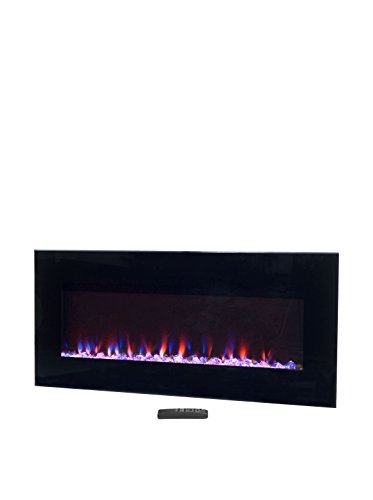 The Benefits of an Ethanol Fireplace
The Benefits of an Ethanol FireplaceEthanol fireplaces can be a fantastic alternative to gas or wood fires as they don't require the use of a chimney or a flue. They also don't generate any smoke or ash, and they can be easily moved between homes.
Use bio-ethanol only on burners designed to burn the fuel. Other gels and liquid fuels may void your burner's warranty.
Cost
The price of a bioethanol fireplace varies in accordance with the kind and design you select. You can find models from a few hundred dollars to a few thousand dollars but they are usually less expensive than a gas or wood fireplace. Certain models are freestanding, while others can be affixed to a fireplace or recessed into a wall. Ethanol fires are also more ecologically friendly than their wood-burning counterparts.
Bio ethanol fires are very popular because they offer a beautiful, natural flame without any smoke or soot. They are suitable for almost every room, and are easy to maintain. However it is important to only use bio ethanol fuel that is designed specifically to be used in these fireplaces. Other types of fuel could damage the burner, which increases the danger of fire. You should also avoid storing flammable substances near the bio ethanol flame.
They are great to heat rooms but shouldn't be your primary source of warmth. They are more efficient than wood-burning fire places and can produce lots of heat, about 2kW on average. It's not enough to heat a whole house, but it can definitely warm up smaller rooms.
In addition to the actual cost of an ethanol fireplace, you'll need to think about other costs associated with maintaining the unit. The fireplace should be kept in a secure location away from pets and children. Follow the manufacturer's instructions when adding fuel, putting out the flame and allowing the heater to cool.
A ethanol fireplace is a great alternative to traditional wood-burning stoves or an electric fire. The major benefit of this fire is that it doesn't require a chimney, meaning you will save on installation and maintenance costs. Moreover, it is safer to use than other kinds of fireplaces. However, it's a good idea to consult with a professional prior to making a final decision. This way, you can be sure that the fireplace will be set up correctly and safely.
Environmental impact
A fireplace made of ethanol is an environmentally friendly alternative to traditional fireplaces that burn wood. It is powered by bioethanol which is created by fermenting the sugar and starch components of materials from plants such as corn, straw and maize. The biofuel's liquid is further distilled to enable it to burn efficiently and cleanly. This type of fuel can be considered a renewable source of energy and doesn't emit harmful odours or emissions. It is also free from soot and smoke. This makes it a safer choice for your home.
They can be positioned in any room in your home, as they do not need chimneys or venting systems. They are easy to use and most models include some kind of remote control. A lot of models come with built-in cooling systems to stop the fuel from getting too hot. They can be used as a main heating source or an additional heating source. They are also great for people who live apartments or condos.
Bio-ethanol fireplaces emit low levels of smells. They are therefore a great choice for homes where people suffer from allergies or asthma. In fact, this type of fireplace is able to be installed in a nursery for babies or a child's bedroom. These fireplaces must be kept away from items that can ignite, such as curtains or furniture.
One of the biggest advantages of a fireplace made from ethanol is its simple use. It is much easier to set up than a traditional wood burning fireplace and doesn't require complicated electrical wiring or installations. Moreover, the liquid fuel can be stored in a tank that is portable so that it can be moved from room to room. This allows you to enjoy the warmth of a fireplace without having deal with the mess of stacking, chopping, and cleaning up wood.
A bioethanol fireplace produces very little pollution. This makes it an ideal choice for those who are concerned about the environment. Additionally, these fireplaces are ideal for saving energy and money.
Safety
A bioethanol fireplace is a secure alternative to an open flame. They are simple to operate, produce less smoke and burn more efficiently than other alternatives. However, like all fireplaces and other appliances that produce fire, they can be dangerous if they are used improperly. Fireplaces that are constructed with wood require special care and attention, so it is essential to read the directions carefully and follow them strictly.
If you're using a bioethanol fireplace, be sure to place it in a place that is well-ventilated and away from any other fire-prone materials. Also ensure that pets and children are kept away from it. Don't attempt to move it while it's burning, as this could cause a fire.
Bio ethanol fireplaces may not be as hazardous as wood fireplaces or gas fireplaces. However, there are some guidelines for safety to ensure they are safe. These include keeping flammable items at least 1500mm away from the burner and not touching it when the flame is burning. Also, it's important to never refill a fire with unapproved fuel.
The burning process of bio-ethanol fire places is safe, especially when you follow the guidelines. Fuel is pumped through a vapour-accelerator where it vaporizes before being ignited with filament. This method of combustion ensures the fuel is completely burned, eliminating smells and harmful substances such as dioxins and furans.
It is essential to adhere to the guidelines given by the manufacturer when installing or operating an ethanol fireplace. Additionally they should be kept away from combustible materials such as curtains and newspapers. They should be kept at a reasonable distance from other household appliances and not be used near sleeping children or animals.
A bio ethanol fireplace has the advantage that it doesn't release harmful odours or fumes. This makes it a safer option for homes with pets or children. They are also more convenient to use than traditional fireplaces because they do not require a chimney and don't trigger carbon monoxide poisoning. These fireplaces also come with a variety of benefits, such as a flexible installation space and the ability to move them around easily.
Installation
A bioethanol fireplace is a fantastic method to add ambiance and warmth to a space. They are available in a variety of designs and can be arranged in different ways. They can be wall-mounted, built-in or freestanding, or even transparent. However, you should always go through the installation manual of a particular fireplace prior to installing it. This will allow you to avoid any problems when installing the fireplace and ensure that your fireplace is safe to use.
The process of installing a bioethanol fireplace is fairly simple. It involves installing the burner and building an enclosure into the wall. The frame should be constructed from a material that is not fire-proof. This will prevent the flame from burning your wall. This will also help to stop the flame spreading to other parts in the room. The frame must be attached to the wall using appropriate screws and dowels.
The ethanol fireplace does not require a flue or chimney unlike other types fireplaces. This makes them a affordable choice for homeowners. They can also be placed in any room and easily moved. Furthermore, they don't emit any harmful gases.
If used properly If it is used correctly, a bioethanol fireplace can be extremely secure. As with all fires it is crucial to keep it away from children and any flammable surfaces. Additionally, the fuel must be kept in a safe place and the fire extinguished before refilling it.
Ethanol fireplaces are simple to maintain and do not produce ash or soot. They are a great choice for those concerned about the effect on the environment of traditional wood-burning ones. Ethanol-fueled fireplaces can be a fantastic alternative to gas or electric fireplaces.
 Although bioethanol fireplaces can be a wonderful addition to any home however, they shouldn't be used as the primary source of heat. They are designed to add warmth and create a cozy ambience however they aren't powerful enough to heat an entire house. Engaging an expert to set up your bioethanol fireplace is the most efficient way to go.
Although bioethanol fireplaces can be a wonderful addition to any home however, they shouldn't be used as the primary source of heat. They are designed to add warmth and create a cozy ambience however they aren't powerful enough to heat an entire house. Engaging an expert to set up your bioethanol fireplace is the most efficient way to go. 







